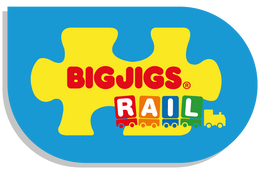
A History Of The British Royal Train
To get in the spirit of the Queen’s Jubilee, we have wound the clock back to explore the history of the British Royal Train. For five generations, the Royal Train has transported the most senior royals across the country. Find out more about its fascinating history below!
What Is The British Royal Train?

Getty Images
The British Royal Train is used to transport senior members of the Royal Family and staff from the Royal Household around Great Britain. It is used for official engagements and longer journeys around the UK. It allows the Royal Family to travel overnight and arrive well-rested ahead of a busy day of engagements.
1842 - The First Royal To Travel By Train
Queen Victoria was the first British monarch to travel by train, hopping aboard the Royal Train on 13th June 1842. She was initially hesitant to ride a train as Victorians believed that fast trains could cause insanity.
She was, however, finally persuaded and went on a half-hour journey from Slough, Berkshire to Paddington Station, London. Queen Victoria supposedly even wrote in her diary that her journey was “delightful and so quick.”
1869 - A Palace On Wheels

Getty Images
Queen Victoria enjoyed royal rail travel so much that 27 years later, she commissioned a set of private carriages. Costing her £700 (around £48,500 today), she decorated them in opulent blue silk and 23-carat gold - a true palace on wheels! The saloon was taken out of service in the early 1900s but can be found in the National Railway Museum, York.
1890s - Modern Upgrades
During the 1890s, the Royal Train received all the mod-cons, such as electric lighting and an onboard toilet (which Queen Victoria refused to use, preferring to have regular toilet breaks at stations).
World War I and World War II - The Secret Royal Train

Getty Images
Royal travel has always been a closely guarded secret, but it was shrouded in even more secrecy during the World Wars. During WWI, King George V (The Queen’s grandfather) used it to travel around the country and be his temporary home on wheels.
In WWII, King George VI used the train to visit heavily bombed areas of the country. It was refurbished to be, quite literally, bulletproof. The white-roofed wooden cars were replaced with a 56-ton armour-plated roof and special cabinets were installed to stow away top-secret documents.
1977 - Present

Getty Images
The current Royal Train came into service in 1977 for the Queen’s Silver Jubilee and is pulled by one of two Class 67 locomotives - 67005 - The Queen’s Messenger and 67706 - Royal Sovereign.
Over the years it has had many renovations, including a £320,000 upgrade in the 1980s. It also has extra security measures such as being bullet, rocket and bomb proof. The carriages today are far less opulent than Queen Victoria’s designs and far more functional.
Carriages
There are currently nine carriages on the Royal Train, consisting of: The Queen’s bedroom, sitting room and bathroom; the Duke of Edinburgh’s bedroom, sitting room and bathroom; The Prince of Wales’s sleeping car; The Prince of Wales’s saloon; Royal Household sleeping quarters; Royal Family dining car (with kitchen); Royal Household dining car (with kitchen); Royal Household couchette, diesel generator, and brake van; and the Royal Household couchette, kitchen, and brake van.
Fuel
The locomotives run on eco-friendly biofuel made from the waste of vegetable oil. The Royal Train is currently owned by Network Rail and maintained and operated by DB Cargo UK.
Speed
Surprisingly, the British Royal Train is far from being speedy. The fastest UK trains travel at 200 mph, whereas the Royal Train travels around 70 mph. Regardless of cruising along at a slow speed, the Royal Train always arrives within 15 seconds of its estimated arrival.
Cheaper Than Flying?
The Royal Train is four times more expensive than travelling by plane. A 2017 trip by Prince Charles from London to Cwmbran, Wales, worked out at £130.84 per mile. A standard ticket for the same journey cost just £1.30 per mile!
